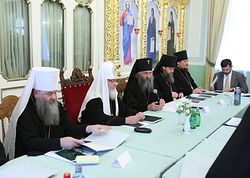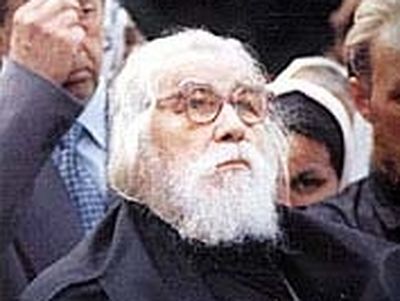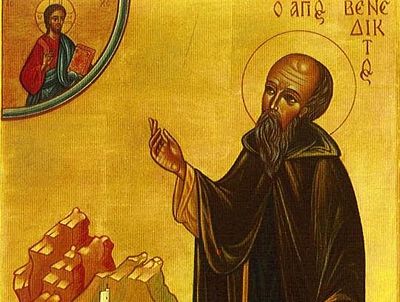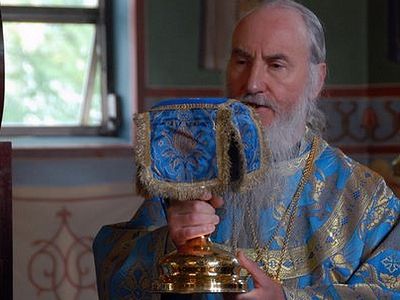Valaam, July 10, 2010
On July 10, His Holiness Patriarch Kirill of Moscow and All Russia headed the meeting of the Committee on the organization of monastery life and monasticism, which took place in the central building of the Holy Transfiguration Stavropegial Valaam Monastery.
Other members of the presidium were: Metropolitan Varsonofy of Saransk and Mordovia, chancellor of the Moscow Patriarchate of the Russian Orthodox Church; Archbishop Theognost of Sergiev Posad, head of the Committee on the organization of monastery life and monasticism and Superior of the Holy Trinity-St. Sergius Lavra; Bishop Pangratios of Troitsky, Superior of the Holy Transfiguration Valaam Stavropegial Monastery; Bishop Mercury of Zaraisk, Superior of the Vysoko-Petrovsky Monastery Stavropegial Monastery; Bishop Sergiy of Solnechnogorsk, head of the Moscow Patriarchate’s administrative secretariat; and Bishop Lazar of Narva.
Also participating in the meeting were: Archimandrite Tikhon (Shevkunov), Superior of the Sretensky Stavropegial Monastery, Moscow; Archimandrite Alexiy (Polikarpov), Superior of the St. Daniel Stavropegial Monastery, Moscow; Archimandrite Porphyry (Shutov), Superior of the Holy Transfiguration Solovki Monastery; Archimandrite Savva (Fateev), Superior of the St. Savva Storozhevsky Monastery; Abbess Sergia (Konkova) of the Holy Trinity Diveyevo Monastery; Abbess Moisea (Bubnova) of the Holy Ascension Monastery, Jerusalem; Abbess Theophila (Lepeshinshkaya) of the Nativity of the Mother of God Monastery; Abbess Seraphim (Shevchik) of the Holy Archangel Michael Monastery, Odessa; Abbess Sophia (Silina) of the Resurrection Novodevichy Monastery, St. Petersburg; Igumen Stephan (Tarakanov), Assistant Chairman of the Synodal Commission on Monasteries; Archpriest Pavel Velikanov, Vice Chancellor of scholarly work for the Moscow Theological Academy; and Vladimir P. Legoida, Chairman of the Synodal information department.
His Holiness the Patriarch opened the meeting by expressing his high evaluation of the work already accomplished by the committee, and noted the more relevant areas of further activity.
His Holiness said, "The tasks set before the Committee are tasks formulated by life itself. We have gathered here not in order to carry on academic, theoretical work—although, of course, this component must also be present. We have organized the Committee first of all in order that the Church might be able to timely respond to those problems it meets. You, like no one else, well know about the problems that exist in the monasteries and amongst monastics.
Monasticism has always been Orthodoxy's main spiritual strength. The decline of monasticism has always led to the decline in Church life. Today, if we were to evaluate what is happening in the Local Orthodox Churches, it is clear to the naked eye how the level of activity of the Local Churches, the strength of their spiritual life, is bound up with the presences of monastics. In those Churches where monasticism has declined, or where there is practically no monasticism, the picture of Church life is quite grievous. For a Church like the Russian Church, with its enormous scale, and with the large-scale problem of monastic life before us, the effectiveness of monastic service is something absolutely necessary."
Archbishop Theognost of Sergiev Posad presented a brief report of the Committee's activity. Afterwards, the main areas of its work were discussed.




